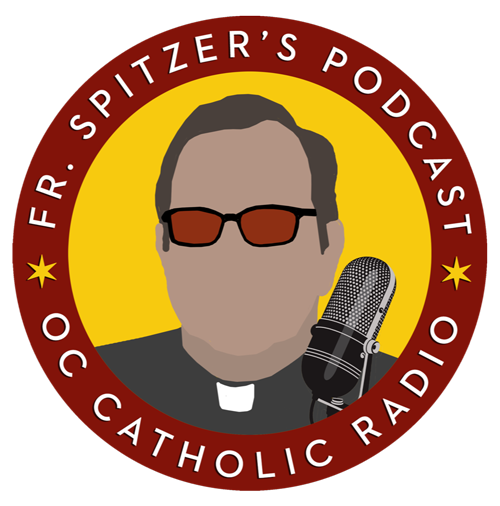The carols of the Christmas season are so familiar and ubiquitous during December that they can sometimes fade into the realm of background music. Here are a few of them, old and new, brought into the historical foreground. You may never think of them in the same way again.
“Carol of the Drum” — Everyone calls this one “The Little Drummer Boy.” And, despite the incongruity of a kid standing in the middle of the Nativity stable and banging away on a tom-tom while the infant Jesus is probably trying to get some shut-eye, the tune has managed to charm its way into ears and hearts worldwide since it first saw air play in 1958. Based on an old Czech carol, it was written and published by Katherine K. Davis in 1941 and first recorded by the Trapp Family Singers in 1953. Since then, the song, very much sacred in character, has been recorded by Bing Crosby, Johnny Cash, Andy Williams, Johnny Mathis, The Supremes, Joan Baez, Stevie Wonder, The Jackson 5, Emmylou Harris, Joan Jett and the Blackhearts, Rosemary Clooney, New Kids on the Block, Glen Campbell, RuPaul, Kenny G, Chicago, Boyz II Men, Josh Groban, Bob Dylan, Mariah Carey, Pink Martini, Justin Bieber, Whitney Houston, Jimi Hendrix and Marlene Dietrich (in German, under the title “Der Trommelmann).”
“I Wonder as I Wander” — The world likely would never have had this haunting carol had the famous balladeer and folk song collector John Jacob Niles not been passing by the town square of the Appalachian hamlet of Murphy, N.C. on a July day in 1933. It was there he heard a poor, disheveled but beautiful girl named Annie Morgan—in town with her itinerant parents for a revival meeting—sing the first three lines of the song and was taken by the purity of her voice and the uniqueness of the melody. Niles asked her to sing the song to him, but after eight tries, for which he paid her 25 cents each time, he came away with “only three lines of verse, a garbled fragment of melodic material—and a magnificent idea,” he later wrote. “With the writing of additional verses and the development of the original melodic material, ‘I Wonder As I Wander’ came into being.”
“Do You Hear What I Hear?” — Do you think about the threat of nuclear war when you hear this song? That’s what inspired it. The French-born songwriter and composer Noel Regney and his wife, pianist Gloria Shayne collaborated on the song, Regney writing the words and Shayne setting it to music. Regney had been asked by a record producer to write a holiday song, but he was inspired, during a walk through the streets of New York in October 1962, to come up with something more than just holiday fluff. That month the Cuban Missile Crisis had all of America fearing for its life as the United States and the Soviet Union faced each other in a nuclear stalemate. Most of the faces Regney saw on the street were somber, but when he spotted two babies in strollers smiling at each other he was inspired to walk straight home and jot down the lyrics of a hopeful song that would become a Christmas plea for peace. The song has been covered by many singers, but none more successfully than Bing Crosby, who sold a million copies of “Do You Hear What I Hear?” in 1963.
“Good Christian Men, Rejoice” (“In Dulci Jubilo”) — This beloved carol was born in a dream. Heinrich Suso, a Dominican monk fell asleep one night in 1328 and delighted to visions of angelic revelry. Suso had been born into a wealthy and noble family but left his riches behind with the intention of bringing the Gospel to the common people. He recorded an account of his dream: “Now this same angel came up to the Servant [Suso] brightly, and said that God had sent him down to him, to bring him heavenly joys amid his sufferings; adding that he must cast off all his sorrows from his mind and bear them company, and that he must also dance with them in heavenly fashion. Then they drew the Servant by the hand into the dance, and the youth began a joyous song about the infant Jesus, which runs thus: ‘In dulci jubilo’…” John Mason Neale, an eminent English clergyman, adapted “In Dulce Jubilo” as “Good Christian Men, Rejoice” in his song collection, “Carols for Christmas-tide” in 1853.
“Angels We Have Heard on High” — No one knows who wrote the music or the lyrics to this lovely and graceful carol, but worshippers chanted the phrase “Gloria in excelsis Deo” in Christmas Eve services as early as 130 A.D. The first musical version of the song was a traditional French carol called “Les Anges dans nos Campagnes.” It was first published in France in 1855 and translated into English in 1862 by James Chadwick, the Catholic Bishop of Hexham and Newcastle in northern England. Underscoring the meaning of the carol, French tradition holds that shepherds in the south of France in medieval times had a Christmas Eve tradition of shouting “Gloria in excelsis Deo” to each other from hilltop to hilltop as they tended their flocks at night.
“Hark! The Herald Angels Sing” — This can be thought of as the ne plus ultra of composition by committee, albeit unintentional. What today is a carol familiar to millions began life in 1739 as a poem written by the hymn writer Charles Wesley, the brother of the founder of the Methodist Church, John Wesley. Some of Wesley’s words apparently seemed turgid to an English evangelist of the time, George Whitefield, who changed them over Wesley’s disapproval. The words languished without music until 1855 when a famous organist, William Cummings, set them to a tune written by the great German composer Felix Mendelssohn—who had specifically said that he did not want the music used for religious purposes. He had originally written it to commemorate the 400th anniversary of Johann Gutenberg’s invention of movable type. This unlikely mashup began to be sung at Christmastime almost immediately.










